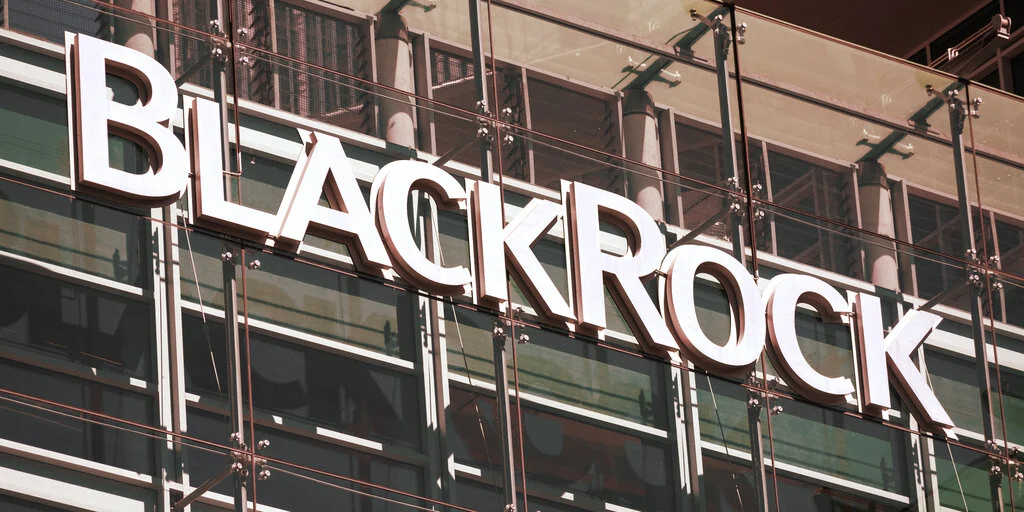Erasing $100 billion in losses from a cryptocurrency crash that occurred on concerns that the Biden administration would be attempting to “kill” the market, Bitcoin has unexpectedly surged higher.
After the Fed decided to keep interest rates on hold and Fed Chair Jerome Powell indicated he would soon be ready to begin cutting rates—forecasting three this year—the price of bitcoin shot up 5%, driving up ethereum, XRP, and the broader crypto market.
The world’s biggest asset manager, BlackRock, quietly disclosed that it has started the second phase of its plan for a cryptocurrency-based “revolution in financial markets”—something Citi analysts predict could become a “$5 trillion market by 2030″—prior to the Fed’s much anticipated announcement, which set off a bitcoin price pump.
In collaboration with asset tokenization startup Securitize, BlackRock, the largest asset manager in the world, has filed to open a tokenized private equity fund. Last year, BlackRock started the scramble to introduce a spot bitcoin exchange-traded fund (ETF) to Wall Street.
It has been disclosed that BlackRock’s new fund would receive infrastructure help from cryptocurrency and bitcoin exchange Coinbase.
The Coinbase institutional business posted on X with the message, “We are excited to announce that Coinbase has been chosen as a key infrastructure provider for Blackrock and Securitize tokenized investment fund.”
“This partnership reflects our commitment to connecting institutions to crypto and demonstrates our ability to provide the necessary technology and products to support the rapidly growing tokenization sector.”
A significant turning point for the cryptocurrency field was reached in 2022 when Coinbase and BlackRock partnered to enable the asset manager’s institutional clients to access bitcoin. This move was hailed as “opening the floodgates for institutions to access bitcoin.”
One of the fastest-growing ETFs ever, BlackRock’s IBIT spot bitcoin ETF, is being held by Coinbase. In just three months, it has soared to $15.5 billion in assets under management.
The documentation for the new fund was not clear about the cryptocurrency or assets it would own when it was submitted to the U.S. Securities and Exchange Commission (SEC) last week. Following the filing, Ondo Finance, the company behind a platform for tokenizing real-world assets, witnessed a 40% increase in the value of its ondo coin.
According to Etherscan data seen by The Block, a cryptocurrency known as BlackRock USD institutional digital liquidity fund (buidl) was established earlier this month on the Ethereum blockchain.
It appears that on March 4, a $100 million transfer was made to the fund. Buidl can only contain one holder and a maximum of 100 coins.
This two-step strategy for cryptocurrency was outlined in an interview in January by the renowned founder and CEO of BlackRock, Larry Fink.
“We think that this is only the beginning. According to Fink, ETFs represent the initial phase of the financial markets’ technology revolution. “Step two is going to be the tokenization of every financial asset.”
Blockchain technology, such as that used in bitcoin, enables traditional assets to be “tokenized” on a public ledger, possibly simplifying and lowering the cost of transferring stocks, bonds, real estate, and alternative investments like art.
According to Fink, we currently have the capability to tokenize. As soon as you purchase or sell an instrument, it is recognized that it is part of a collectively constructed general ledger if you own a tokenized security. By implementing a tokenized system, this eradicates all corruption.
As Fink has explained, the crypto revolution might usher in “the next generation for markets,” and last year, Wall Street heavyweights like BlackRock, JPMorgan, and others discreetly started laying the framework.
The true game-changer for tokenized assets, according to Axelar protocol founder and chief executive of Interop Labs Sergey Gorbunov, is that they allow financial institutions to become more agile and quickly develop new products for new markets at a pace that is not feasible with current technology. Gorbunov made this statement in an email.
Now that the infrastructure is in place, these benefits may be provided across several blockchains with transparency, monitoring, and the modular customisation needed for worldwide compliance.
Meanwhile, the development of real-world asset tokenization could help to accelerate bitcoin and cryptocurrency acceptance.
According to Gorbunov, there are numerous potential long-term drivers for the adoption of web3 [crypto], and asset tokenization is just one of them. Infrastructure has advanced to the point where it is now feasible to offer notable benefits over legacy systems. Although it’s common knowledge that blockchain use cases have not materialized, in our opinion, the use cases are far more advanced than the infrastructure. This is starting to alter now.








